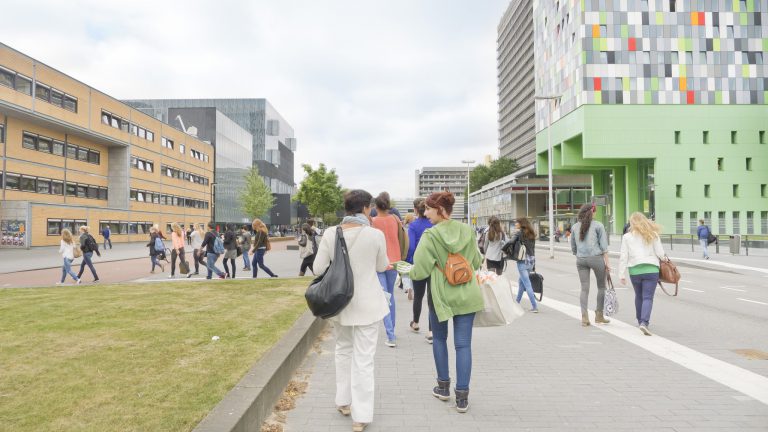
The Student Accommodation sector is increasingly viewed as a valuable asset with attractive buy-to-let returns, spurring a swell in investment from housing operators and wealthy parents in countries across the globe.
This year, there has been a record figure of investment in UK student housing, surpassing the £2.5bn the sector brought in in 2014, and showing a 40 percent growth from the previous peak back in 2012.
According to Savills, the international real estate service provider, there has been huge growth in numbers of purpose built student accommodation (PBSA) in London. In the first five months of this year alone, revenue brought in through PBSA amounted to £4.2bn, 70 percent more than the sector produced in the whole of 2014.
Why is Student Housing so Attractive in London? Paul Bashir, COO, Round Hill Capital interviewed https://t.co/vI1fp9RNoU #realestate
— Global Real Estate (@realestateGRI) October 21, 2015
LetterOne Treasury Services, endorsed by Russian oligarch Mikhail Fridman, paid £5.32m for five student housing sites within central London. Other global investors, such as the Canada Pension Plan Investment Board, who have bought a portfolio worth £1.1bn across 17 of Britain’s largest university towns, are pumping billions of pounds into UK student property.
“The sector is maturing,” says Marcus Roberts, Head of Student Housing at Savills, “with properties becoming more sophisticated and investors viewing it more on a par with non-student residential assets [which have typically been more desirable].”
Roberts claims that the US and Far East are also heavily investing in a costly portfolio, saying that “Without a doubt, there is more international movement into the sector in the UK than ever before.”
We provide luxury #student #housing with many of our London #properties used as accommodation for overseas students. http://t.co/tNwWAt3IKz
— LuxuryDigs (@LuxuryDigsUK) October 19, 2015
According to research by Direct Line for Business, 280,000 parents hope to invest in property for their children at university; that amounts to 17 percent wanting to put their child on the property ladder to give them a safe and secure place to live as they work towards their degree.
The majority of the revenue brought into the sector derives from offshore investors. Wealthy parents, predominantly from regions of Asia, are looking to accommodate their children through university, but are also thinking ahead to foreign visits and future returns on their buy-to-let investment.
In 2013-14, there were 310,190 non-EU students, or 13 percent of the total student population, enrolled at Higher Education Institutions throughout the UK. China accounts for the largest number of international students studying in the UK, with a total number of 87,895, whilst India had only 19,750 students enrolled, a 49 percent drop from the past two year’s pool of applicants, largely due to the UK’s recent visa reforms making them feel unwelcome.
According to a survey by FTSE 250 Unite Group, the stereotype of shabby and mistreated student housing, such as that in Channel 4’s popular series Fresh Meat, has long been forgotten. The student insight report found that 87 percent of students favoured a peaceful living environment, and 56 percent claimed that an accessible nightlife was not a main priority, suggesting that quality housing and a commitment to academics now outweigh aspects of leisure and entertainment.
“When you are paying around £9,000 a year to study,” says Mark Allan, Chief Executive of Unite Group, “you are definitely more aware of the costs you are incurring. You will still find people want to enjoy themselves, but we are seeing more students emerge that want a good time, but first and foremost want to leave with a good degree.”
The hefty rise in the cost of tuition has made students more dedicated to their studies. Since they are spending more time at home, more and more are seeking luxury facilities, and for international students with well-off parents seeking a valuable investment, this often means an incredibly premium property.
Is this the best student housing in London? http://t.co/gwThvwKhji
— Handpicked London (@LDN) October 18, 2015
Factors that drive the price of student accommodation are different to those driving other property investments. Proximity to the university, as well as the existing supply of alternate student housing, are aspects parents will consider before forking out for their child’s accommodation.
Savills is currently advertising a duplex flat in Shaftesbury Avenue, the perfect location for potential-parent investors as it is just a ten minute walk from King’s College London and the London School of Economics. One lucky student could inherit this luxury property for the price of £3.75m.
The wealthiest foreign students favour areas such as Mayfair and Knightsbridge, where the typical rental price hits £72,000 per year. The first of five redeveloped flats in Fountain House just off Park Lane, for example, costing £130,000 per year to rent a two-bed flat with a walk in dressing room, designer kitchen and beautiful views of Hyde Park, was rented out to a 21 year old US student earlier this month.
The flood of investment is largely due to the fact that from 2105-16, caps on student numbers will be removed meaning that universities will be able to recruit as many students as they see fit. Savills claims that the upsurge in revenue brought in by property has resulted in rising prices, and with no equivalent increase in rents, yields have fallen to sub-5 percent in these areas.
“Parents often pay a premium to buy beautifully refurbished apartments and this feeds value up the market,” says Andrew Perratt, Savills’ Head of Residential in Scotland and Northern Ireland.
Student accommodation is now considered a valuable, global asset, and there are three main factors that are driving the international surge in university accommodation: firstly, a significant global increase in overall student mobility; secondly, the emerging global appetite that has led key management platforms to generate international brands for student accommodation; and finally, the growing appetite from global investors seeking to diversify their portfolio with a profitable return investment.
#Student #housing market hits £3.98bn #landlords #BTL #HMO #BuyToLet #property https://t.co/6GiIcBIBUG #accommodation
— sales (@HMOinvestment) October 22, 2015
This means that the demand for purpose built student housing is not restricted to the UK- the US and Australia has also seen a considerable rise in investment within their student housing sectors.
For example, LA and New York are home to four out of six of the most popular universities for international students, according to the IIE’s statistics. NYU and Columbia are the first and fourth most popular institutions, and according to Amy Williamson of Knight Frank’s US Residential business, this makes these two university areas a popular target amongst Asian buyers.
In 2013-14, there were 886,000 international students enrolled on courses throughout the United States, that’s four percent of the total student population, and an eight percent growth on figures from the previous year.
Looking to invest? Choose something sustainable… Like student accommodation, perhaps? http://t.co/XBTt4wY6QQ
— PropertyJunction (@Prop_Junction) March 17, 2015
In Greenwich Village, the home of NYU, Stribling, a local agent, is advertising a two-bed house for $5.95m. The same agent has a two-bed apartment in Washington Square South on the market for $2.75m.
“It’s an excellent tool for them to explore the market and place money in the US before they buy larger places for themselves,” says Kirk Henkels, Director of Striblings New York.
The demand for PBSA in Australia is also on the rise, though the market is still considered ‘immature’ when compared to that of the UK and US. Only one in seven students in Sydney can currently access purpose built accommodation, compared to the ratio of one in four for those choosing to study in London.
However, international students travelling to Australia are on a steady rise, meaning a much greater demand for purpose built housing. The total number of international student visa holders in Australia in 2014 was 453,500, a 10.4 percent increase on figures from 2013. These students represented 191 countries across the world, and the majority came from China.
As the Australian investment class continues to grow, so too does the opportunity for investment from both domestic and offshore customers. Furthermore, with predictions that the global student market will continue to swell, there will be increased competition among operators to become the first truly global and legitimate student brand.
With the rising cost of fees along with the rising cost of living, students are demanding higher-quality housing and are, in turn, considered an increasingly sophisticated market. The number of young academics seeking an education overseas will continue to grow, along with the development of premium, purpose built student accommodation.
Image via Shutterstock.







